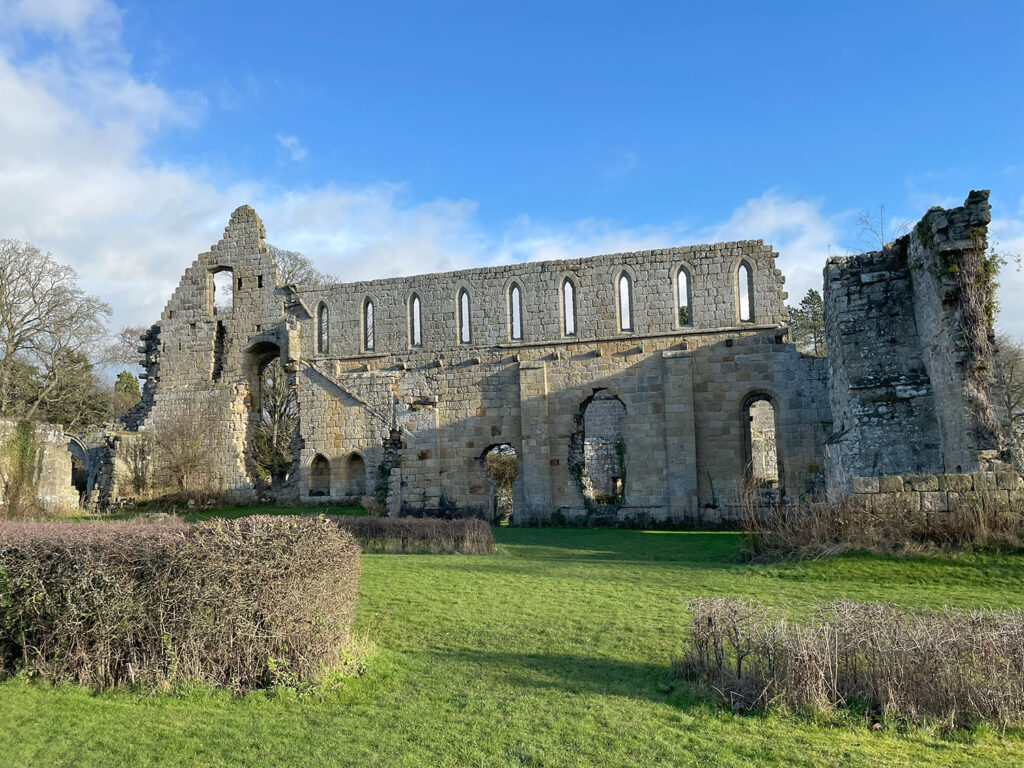Jervaulx Abbey is quite an extraordinary property in this day and age, being in private ownership rather than a property of the state. Yet, its extensive pale sandstone ruins are no less breath-taking. Situated in the midst of a tranquil setting, hidden within a valley in the Vale of Ure, a few miles east of the Yorkshire Dales, this former Cistercian monastery was once a shining light of northern monasticism, being initially founded in 1156 and dedicated to St Mary as a daughter house to Byland Abbey, over in Ryedale.

However, the abbey in fact first started life a little further down the road: at Fors, near the River Ure in Wensleydale. Much to the monks’ chagrin, the ground there proved too difficult to farm, so the brothers relocated to the present site. So prosperous was the abbey in its heyday, it owned half of the surrounding valley and was renowned for breeding horses, as well as being the original producers of Wensleydale cheese.
As another victim of Henry VIII’s Dissolution of the Monasteries, it was left plundered and pillaged in the 16th century, with its final abbot, Adam Sedbar or Sedbergh, joining the Pilgrimage of Grace (a popular uprising against religious changes made by King Henry), which caused his death by hanging at Tyburn in London in June 1537, after which his monastic property was forfeited to the Crown.
Subsequently, Jervaulx’s buildings were dismantled, and a large proportion of the fixtures, fittings, and fabric dispersed throughout the parish churches of the Yorkshire Dales. Fittings saved included the great Rood Screen and Abbot’s Stall which found its home in St Andrew’s church, Aysgarth; the stonework of the east window of St Gregory’s in Bedale; and the grave-slab of Abbot Thornton, now in Middleham Church.
As the Reformation dust settled, Jervaulx’s future looked bleak, seeing the ruins passed through generations and the several families who owned the adjacent Jervaulx Hall. Jervaulx Abbey remains in private ownership to this day, with the gardens providing a stunning backdrop and now known for a variety of horticulture, comprising over 180 varieties of wildflower. Open from dawn till dusk, visitors can wander at leisure around the remains of the nave, transepts, choir, cloister, kitchen and chapter house.